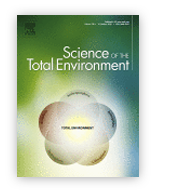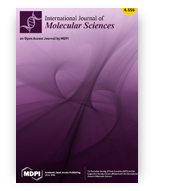SARS-CoV-2 in the environment - Non-droplet spreading routes
Natalia Wiktorczyk-Kapischke, Katarzyna Grudlewska-Buda, Ewa Wałecka-Zacharska, Joanna Kwiecińska-Piróg, Laura Radtke, Eugenia Gospodarek-Komkowska, Krzysztof Skowron
Science of the Total Environment
 The new coronavirus SARS-CoV-2, first identified in Wuhan (China) in December 2019, represents the same family as the Serve Acute Respiratory Syndrome Coronavirus-1 (SARS-CoV-1). These viruses spread mainly via the droplet route. However, during the pandemic of COVID-19 other reservoirs, i.e., water (surface and ground), sewage, garbage, or soil, should be considered. As the infectious SARS-CoV-2 particles are also present in human excretions, such a non-droplet transmission is also possible. A significant problem is the presence of SARS-CoV-2 in the hospital environment, including patients' rooms, medical equipment, everyday objects and the air. Relevant is selecting the type of equipment in the COVID-19 hospital wards on which the virus particles persist the shortest or do not remain infectious. Elimination of plastic objects/equipment from the environment of the infected person seems to be of great importance. It is particularly relevant in water reservoirs contaminated with raw discharges. Wastewater may contain coronaviruses and therefore there is a need for expanding Water-Based Epidemiology (WBE) studies to use obtained values as tool in determination of the actual percentage of the SARS-CoV-2 infected population in an area. It is of great importance to evaluate the available disinfection methods to control the spread of SARS-CoV-2 in the environment. Exposure of SARS-CoV-2 to 65–70% ethanol, 0.5% hydrogen peroxide, or 0.1% sodium hypochlorite has effectively eliminated the virus from the surfaces. Since there are many unanswered questions about the transmission of SARS-CoV-2, the research on this topic is still ongoing. This review aims to summarize current knowledge on the SARS-CoV-2 transmission and elucidate the viral survival in the environment, with particular emphasis on the possibility of non-droplet transmission.
The new coronavirus SARS-CoV-2, first identified in Wuhan (China) in December 2019, represents the same family as the Serve Acute Respiratory Syndrome Coronavirus-1 (SARS-CoV-1). These viruses spread mainly via the droplet route. However, during the pandemic of COVID-19 other reservoirs, i.e., water (surface and ground), sewage, garbage, or soil, should be considered. As the infectious SARS-CoV-2 particles are also present in human excretions, such a non-droplet transmission is also possible. A significant problem is the presence of SARS-CoV-2 in the hospital environment, including patients' rooms, medical equipment, everyday objects and the air. Relevant is selecting the type of equipment in the COVID-19 hospital wards on which the virus particles persist the shortest or do not remain infectious. Elimination of plastic objects/equipment from the environment of the infected person seems to be of great importance. It is particularly relevant in water reservoirs contaminated with raw discharges. Wastewater may contain coronaviruses and therefore there is a need for expanding Water-Based Epidemiology (WBE) studies to use obtained values as tool in determination of the actual percentage of the SARS-CoV-2 infected population in an area. It is of great importance to evaluate the available disinfection methods to control the spread of SARS-CoV-2 in the environment. Exposure of SARS-CoV-2 to 65–70% ethanol, 0.5% hydrogen peroxide, or 0.1% sodium hypochlorite has effectively eliminated the virus from the surfaces. Since there are many unanswered questions about the transmission of SARS-CoV-2, the research on this topic is still ongoing. This review aims to summarize current knowledge on the SARS-CoV-2 transmission and elucidate the viral survival in the environment, with particular emphasis on the possibility of non-droplet transmission.
10.1016/j.scitotenv.2021.145260
A Novel, LAT/Lck Double Deficient T Cell Subline J.CaM1.7 for Combined Analysis of Early TCR Signaling
Inmaculada Vico-Barranco, Mikel M. Arbulo-Echevarria, Serrano-García, Alba Pérez-Linaza, José M. Miranda-Sayago, Arkadiusz Miążek, Isaac Narbona-Sánchez, Enrique Aguado
Cells
 Intracellular signaling through the T cell receptor (TCR) is essential for T cell development and function. Proper TCR signaling requires the sequential activities of Lck and ZAP-70 kinases, which result in the phosphorylation of tyrosine residues located in the CD3 ITAMs and the LAT adaptor, respectively. LAT, linker for the activation of T cells, is a transmembrane adaptor protein that acts as a scaffold coupling the early signals coming from the TCR with downstream signaling pathways leading to cellular responses. The leukemic T cell line Jurkat and its derivative mutants J.CaM1.6 (Lck deficient) and J.CaM2 (LAT deficient) have been widely used to study the first signaling events upon TCR triggering. In this work, we describe the loss of LAT adaptor expression found in a subline of J.CaM1.6 cells and analyze cis-elements responsible for the LAT expression defect. This new cell subline, which we have called J.CaM1.7, can re-express LAT adaptor after Protein Kinase C (PKC) activation, which suggests that activation-induced LAT expression is not affected in this new cell subline. Contrary to J.CaM1.6 cells, re-expression of Lck in J.CaM1.7 cells was not sufficient to recover TCR-associated signals, and both LAT and Lck had to be introduced to recover activatory intracellular signals triggered after CD3 crosslinking. Overall, our work shows that the new LAT negative J.CaM1.7 cell subline could represent a new model to study the functions of the tyrosine kinase Lck and the LAT adaptor in TCR signaling, and their mutual interaction, which seems to constitute an essential early signaling event associated with the TCR/CD3 complex.
Intracellular signaling through the T cell receptor (TCR) is essential for T cell development and function. Proper TCR signaling requires the sequential activities of Lck and ZAP-70 kinases, which result in the phosphorylation of tyrosine residues located in the CD3 ITAMs and the LAT adaptor, respectively. LAT, linker for the activation of T cells, is a transmembrane adaptor protein that acts as a scaffold coupling the early signals coming from the TCR with downstream signaling pathways leading to cellular responses. The leukemic T cell line Jurkat and its derivative mutants J.CaM1.6 (Lck deficient) and J.CaM2 (LAT deficient) have been widely used to study the first signaling events upon TCR triggering. In this work, we describe the loss of LAT adaptor expression found in a subline of J.CaM1.6 cells and analyze cis-elements responsible for the LAT expression defect. This new cell subline, which we have called J.CaM1.7, can re-express LAT adaptor after Protein Kinase C (PKC) activation, which suggests that activation-induced LAT expression is not affected in this new cell subline. Contrary to J.CaM1.6 cells, re-expression of Lck in J.CaM1.7 cells was not sufficient to recover TCR-associated signals, and both LAT and Lck had to be introduced to recover activatory intracellular signals triggered after CD3 crosslinking. Overall, our work shows that the new LAT negative J.CaM1.7 cell subline could represent a new model to study the functions of the tyrosine kinase Lck and the LAT adaptor in TCR signaling, and their mutual interaction, which seems to constitute an essential early signaling event associated with the TCR/CD3 complex.
The Phylogenetic Structure of Reptile, Avian and Uropathogenic Escherichia coli with Particular Reference to Extraintestinal Pathotypes
Marta Książczyk, Bartłomiej Dudek, Maciej Kuczkowski, Robert O'Hara, Kamila Korzekwa, Anna Wzorek, Agnieszka Korzeniowska-Kowal, Mathew Upton, Adam Junka, Alina Wieliczko, Radosław Ratajszczak, Gabriela Bugla-Płoskońska
International Journal of Molecular Sciences
 The impact of the Gram-negative bacterium Escherichia coli (E. coli) on the microbiomic and pathogenic phenomena occurring in humans and other warm-blooded animals is relatively well-recognized. At the same time, there are scant data concerning the role of E. coli strains in the health and disease of cold-blooded animals. It is presently known that reptiles are common asymptomatic carriers of another human pathogen, Salmonella, which, when transferred to humans, may cause a disease referred to as reptile-associated salmonellosis (RAS). We therefore hypothesized that reptiles may also be carriers of specific E. coli strains (reptilian Escherichia coli, RepEC) which may differ in their genetic composition from the human uropathogenic strain (UPEC) and avian pathogenic E. coli (APEC). Therefore, we isolated RepECs (n = 24) from reptile feces and compared isolated strains’ pathogenic potentials and phylogenic relations with the aforementioned UPEC (n = 24) and APEC (n = 24) strains. To this end, we conducted an array of molecular analyses, including determination of the phylogenetic groups of E. coli, virulence genotyping, Pulsed-Field Gel Electrophoresis-Restriction Analysis (RA-PFGE) and genetic population structure analysis using Multi-Locus Sequence Typing (MLST). The majority of the tested RepEC strains belonged to nonpathogenic phylogroups, with an important exception of one strain, which belonged to the pathogenic group B2, typical of extraintestinal pathogenic E. coli. This strain was part of the globally disseminated ST131 lineage. Unlike RepEC strains and in line with previous studies, a high percentage of UPEC strains belonged to the phylogroup B2, and the percentage distribution of phylogroups among the tested APEC strains was relatively homogenous, with most coming from the following nonpathogenic groups: C, A and B1. The RA-PFGE displayed a high genetic diversity among all the tested E. coli groups. In the case of RepEC strains, the frequency of occurrence of virulence genes (VGs) was lower than in the UPEC and APEC strains. The presented study is one of the first attempting to compare the phylogenetic structures of E. coli populations isolated from three groups of vertebrates: reptiles, birds and mammals (humans).
The impact of the Gram-negative bacterium Escherichia coli (E. coli) on the microbiomic and pathogenic phenomena occurring in humans and other warm-blooded animals is relatively well-recognized. At the same time, there are scant data concerning the role of E. coli strains in the health and disease of cold-blooded animals. It is presently known that reptiles are common asymptomatic carriers of another human pathogen, Salmonella, which, when transferred to humans, may cause a disease referred to as reptile-associated salmonellosis (RAS). We therefore hypothesized that reptiles may also be carriers of specific E. coli strains (reptilian Escherichia coli, RepEC) which may differ in their genetic composition from the human uropathogenic strain (UPEC) and avian pathogenic E. coli (APEC). Therefore, we isolated RepECs (n = 24) from reptile feces and compared isolated strains’ pathogenic potentials and phylogenic relations with the aforementioned UPEC (n = 24) and APEC (n = 24) strains. To this end, we conducted an array of molecular analyses, including determination of the phylogenetic groups of E. coli, virulence genotyping, Pulsed-Field Gel Electrophoresis-Restriction Analysis (RA-PFGE) and genetic population structure analysis using Multi-Locus Sequence Typing (MLST). The majority of the tested RepEC strains belonged to nonpathogenic phylogroups, with an important exception of one strain, which belonged to the pathogenic group B2, typical of extraintestinal pathogenic E. coli. This strain was part of the globally disseminated ST131 lineage. Unlike RepEC strains and in line with previous studies, a high percentage of UPEC strains belonged to the phylogroup B2, and the percentage distribution of phylogroups among the tested APEC strains was relatively homogenous, with most coming from the following nonpathogenic groups: C, A and B1. The RA-PFGE displayed a high genetic diversity among all the tested E. coli groups. In the case of RepEC strains, the frequency of occurrence of virulence genes (VGs) was lower than in the UPEC and APEC strains. The presented study is one of the first attempting to compare the phylogenetic structures of E. coli populations isolated from three groups of vertebrates: reptiles, birds and mammals (humans).
10.3390/ijms22031192









